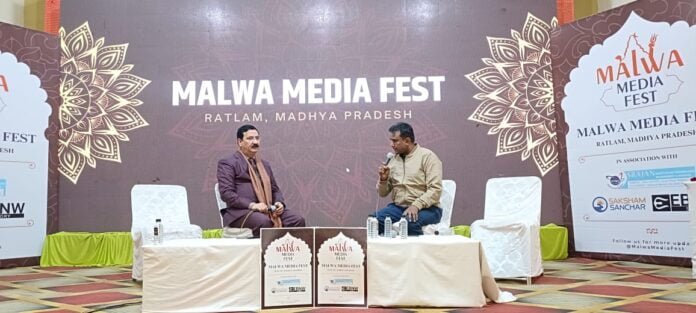
The Malwa Media Fest recently played host to a riveting discussion on the intricate and contentious topic of the Ram Temple , offering attendees a unique exploration of the complex themes surrounding the construction of the Ram Mandir. The discourse delved deep into the realms of evaluation, ego, illusion, and the legalities governing this significant socio-political issue.
Sanjay Dwivedi, a prominent speaker, took the stage as the main presenter, while Hiren Joshi posed insightful questions, guiding the conversation through the intricate web of perspectives. The discussion commenced with an exploration of the differences among political parties concerning the Pran Pratistha ceremony, with Sanjay emphasizing how even negative comments contribute to the ongoing search for Ram.
The dialogue then touched upon the choice of January 22 for the Pran Pratistha and the associated ego involved. Sanjay clarified, referencing the Supreme Court’s decision and the careful consideration that went into selecting the date. The discourse continued, addressing controversial statements made by Shankaracharya, with Sanjay ji dispelling misconceptions by highlighting the widespread support the Shankaracharya received.
The historical contributions of Mahant Avaidyanath and Paramhans Ramchandra ji in the construction of the Ram temple were underscored, shedding light on their pivotal roles. The discussion even touched on a historical instance when the Supreme Court had once declared Lord Ram as imaginary.
Political differences were explored, with Sanjay ji speculating that confusion among parties regarding credit and motives might have fueled disagreements. Comparisons were drawn between the construction of the Ram temple and the Somnath temple, showcasing historical parallels.
Audience engagement played a vital role, with questions from the attendees adding an intriguing layer to the discussion. Sanjay ji skillfully addressed queries, contributing to a comprehensive understanding of the multifaceted Ram Mandir dispute.
The central themes of the discussion were organized around three key pillars:
Ego – A Cultural Memory and National Sentiment
- The discussion emphasized the vital role of cultural memory and national sentiment in the construction of the Ram temple.
- Rooted in religious and social foundations, the temple holds significant importance in shaping the transformation of Indian society.
Illusion – Religious and Social Inequality
- Delving into the consequences of religious and social inequality, the discourse highlighted the prevalence of misconception and injustice in the Ram Mandir controversy.
- The call for sensitivity in seeking solutions to address these issues was a central theme.
Forms of Rules and Constitution
- The discussion critically examined the legal aspects and constitutional framework governing the Ram Mandir dispute.
- Ideas were explored to find resolutions through the application of law and justice.
In conclusion, the Ram Mandir discussion at the Malwa Media Fest provided attendees with an insightful and thought-provoking exploration of one of India’s most debated and emotionally charged topics.

